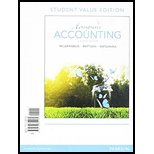
Introduction:
Cash Flow Statements:
- Cash flow statements are an integral part of the financial statements of a company. They reflect the direction and movement of the
cash inflows and outflows during a reporting period. The cash inflows and outflows are segregated into the following activities:
Cash flows from Operating activities – The cash inflows refer to sales and income from operating activities andcash outflows include both cash and non-cash outflows from the operating activities i.e. the day to day activities of the business.
- Cash flows from Investing activities – The cash inflows refer to sales and income from investing activities and cash outflows include cash outflows from the investing activities in the form of purchase of fixed assets and investments.
- Cash flows from Financing activities – The cash inflows refer to income from financing activities such as raising share capital and debt and cash outflows include cash outflows from the financing activities in the form of dividends and interest paid.
There are two methods of preparing cash flow statements:
- Direct Method – It measures the actual cash inflows and cash outflows that are affected during a particular reporting period. The actual cash flows do not include non-cash items and items that are recorded owing to the accrual principle.
- Indirect Method –It measures the cash inflows and cash outflows that are affected during a particular reporting period including the non-cash items and items that are recorded owing to the accrual principle.
• Free Cash flow is a measure of the cash flow available to be used after accounting for changes in planned future activities such as increase in capital expenditures, payment of cash dividends etc.
• Free Cash flow is calculated as the difference between cash flow from operations and the capital expenditures planned. Free Cash flow is an efficient enabler in the analysis of the cash flows of the future periods as it allows for estimation of future cash flow positions after taking into account effect of change of future activities.
Free cash flow for next year
Want to see the full answer?
Check out a sample textbook solution
Chapter 16 Solutions
Horngren's Accounting, Student Value Edition Plus MyAccountingLab with Pearson eText, Access Card Package
- Important disclosures regarding likely losses that could not be estimated are found where? General Ledger Accounts Income Statement Notes To The Financial Statementsarrow_forwardOn December 1, your company paid its insurance agent $2,400 for the annual insurance premium covering the twelve-month period beginning on December 1. The $2,400 payment was recorded on December 1 with a debit to the current asset Prepaid Insuranceand a credit to the current asset Cash. Your company prepares monthly financial statements at the end of each calendar month. The following questions pertain to the adjusting entry that should be written by the company. What date should be used to record the December adjusting entry?arrow_forwardA bank lent $100,000 to a customer on December 1 that required the customer topay an annual percentage rate (APR) of 12% on the amount of the loan. The loan is duein six months and no payment of interest or principal is to be made until the note is dueon May 31. The bank prepares monthly financial statements at the end of each calendarmonth. The following questions pertain to the adjusting entry that the bank will be making for its accounting records. Question: What date should be used to record the December adjusting entry?arrow_forward
- Typically an adjusting entry will include which of the following? One Balance Sheet Account And One Income Statement Account Two Balance Sheet Accounts Two Income Statement Accountsarrow_forwardWhich type of adjusting entry is often reversed on the first day of the next accounting period? Accrual Deferral Depreciationarrow_forward. In the case of a bank's accrued interest revenues, which occurs first? Earning The Interest Revenues Receiving The Interest From The Borrowerarrow_forward
- The ending balance in the account Prepaid Insurance is expected to report which of the following? The Accrued Amount Of Insurance Expense The Original Amount Of The Insurance Premiums Paid The Expired Portion Of The Insurance Premiums Paid The Unexpired Portion Of The Insurance Premiums Paidarrow_forwardThe adjusting entry that reduces the balance in Deferred Revenues or Unearned Revenues will also include which of the following? A Debit To Cash A Credit To Fees Earned A Debit To Fees Earned A Credit To Fees Receivablearrow_forwardThe adjusting entry that reduces the balance in Prepaid Insurance will also include which of the following? A Credit To Cash A Credit To Insurance Expense A Debit To Insurance Expense A Debit To Insurance Payablearrow_forward
- Which of the following will be included in the adjusting entry to accrue interest expense? A Debit To Cash A Credit To Interest Payable A Debit To Interest Payable A Debit To Prepaid Interestarrow_forwardIn the case of a company's accrued interest expense, which of the following occurs first? Incurring The Interest Expense Paying The Interest To The Lenderarrow_forwardWhat type of accounts are Accumulated Depreciation and Allowance for Doubtful Accounts? Contra Asset Equity Expense Liability Revenuearrow_forward

 AccountingAccountingISBN:9781337272094Author:WARREN, Carl S., Reeve, James M., Duchac, Jonathan E.Publisher:Cengage Learning,
AccountingAccountingISBN:9781337272094Author:WARREN, Carl S., Reeve, James M., Duchac, Jonathan E.Publisher:Cengage Learning, Accounting Information SystemsAccountingISBN:9781337619202Author:Hall, James A.Publisher:Cengage Learning,
Accounting Information SystemsAccountingISBN:9781337619202Author:Hall, James A.Publisher:Cengage Learning, Horngren's Cost Accounting: A Managerial Emphasis...AccountingISBN:9780134475585Author:Srikant M. Datar, Madhav V. RajanPublisher:PEARSON
Horngren's Cost Accounting: A Managerial Emphasis...AccountingISBN:9780134475585Author:Srikant M. Datar, Madhav V. RajanPublisher:PEARSON Intermediate AccountingAccountingISBN:9781259722660Author:J. David Spiceland, Mark W. Nelson, Wayne M ThomasPublisher:McGraw-Hill Education
Intermediate AccountingAccountingISBN:9781259722660Author:J. David Spiceland, Mark W. Nelson, Wayne M ThomasPublisher:McGraw-Hill Education Financial and Managerial AccountingAccountingISBN:9781259726705Author:John J Wild, Ken W. Shaw, Barbara Chiappetta Fundamental Accounting PrinciplesPublisher:McGraw-Hill Education
Financial and Managerial AccountingAccountingISBN:9781259726705Author:John J Wild, Ken W. Shaw, Barbara Chiappetta Fundamental Accounting PrinciplesPublisher:McGraw-Hill Education





